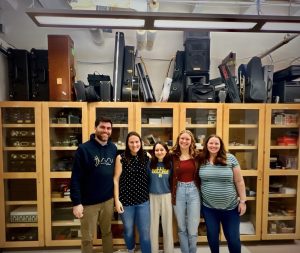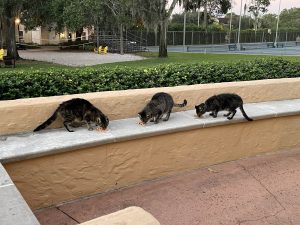Let’s use the metaphor of an ancient sacred temple as an embodiment of literature. In it we can see a quirk in the architectural plan. It is sustained oddly by only two columns; one is more modern than the other, the other one is more realistic in its design. It might be important to note that both are crumbling and are in severe need of repair. This begs the question: how do these pillars still sustain the infrastructure?
Now imagine the temple is in the midst of heavy construction around it – in all directions. These newer constructs are more contemporary and cheaply made edifices being built in favor of renovating the ancient temple.
Literature, an art-form that uses speech as its basis, is ideally free. Free speech is necessary as its cornerstone. For the purposes of this article, in an American context, it is also a column to a country that claims to defend freedom. At Rollins, the first Professor of Ancient Languages, William Webster Lloyd, sent a letter fifty years after his retirement to Hamilton Holt about “Straight Thinking,” a letter that can be found in Olin’s archives today.
This article is my deconstruction of the concept of “straight thinking,” freedom of speech, and their relationship to Olin’s new “Freedom of Speech Column”, located right in front of the Bookmark Café. The new “Freedom of Speech Column” has two white boards and two cork boards, alternating between each face of the column, with an additional two famous quotes printed on it.
Speaking to Jonathan Miller, director of Olin Library, the library staff had the idea to use the column for the purpose of “freedom of speech.” Why this column? Miller told me that originally they wanted to get rid of it, but to do so would cost them over $5 million. However, as awkwardly placed as it is, the column sustains a crucial structural foundation in the library. So that option is thrown out the window. The column itself is structurally vital, yet completely inconvenient. Does it sound familiar? Free speech is the same way too.
Free speech is, as the column in the library, “awkwardly” in front of your face. A library is an institution fundamentally based on free speech. However, I want to specifically discuss how one can use free speech. Miller said the staff is not designing a library for just conventionally studied ideas to be understood by a student. A student must come to terms with contradictory viewpoints during their studies, something Lloyd advised Holt to keep in mind.
For free speech you need access to conflicting information. With respect to what can be written on the column, Jonathan answered: “Everything goes”. However, the US Supreme Court does set limitations and guidelines on freedom of expression and speech. For example, individual communities can regulate how or when obscenities can be used, if at all. The other significant guideline comes from the “You can’t yell ‘fire’ in a crowded theater” story.
However, if you really need to, you could write the word “FIRE!!!” on the column. But how long can messages on the column be left up? Do you simply replace less favorable texts with better ones, or do you arbitrarily erase everything after a certain time period? There are still some rules that have to be added, however, the freedom of speech column is continually being used by people in the library. For the ones that are not using this mode of expression but feel the urge to cut it down, I must say that: we’re in college, and even here, the ways of using free speech are still quite taboo in certain mindsets; we must use what we have available to publish our personal doxa.
What can be published? What can be written? What can’t? What is politically correct?
My invitation is simple: we must use the outlets we have available – like The Sandspur and the library’s column – to express our unfiltered opinions freely. I am referring to an approach where open dialogue is dialectical. That is my sincere hope.











Be First to Comment